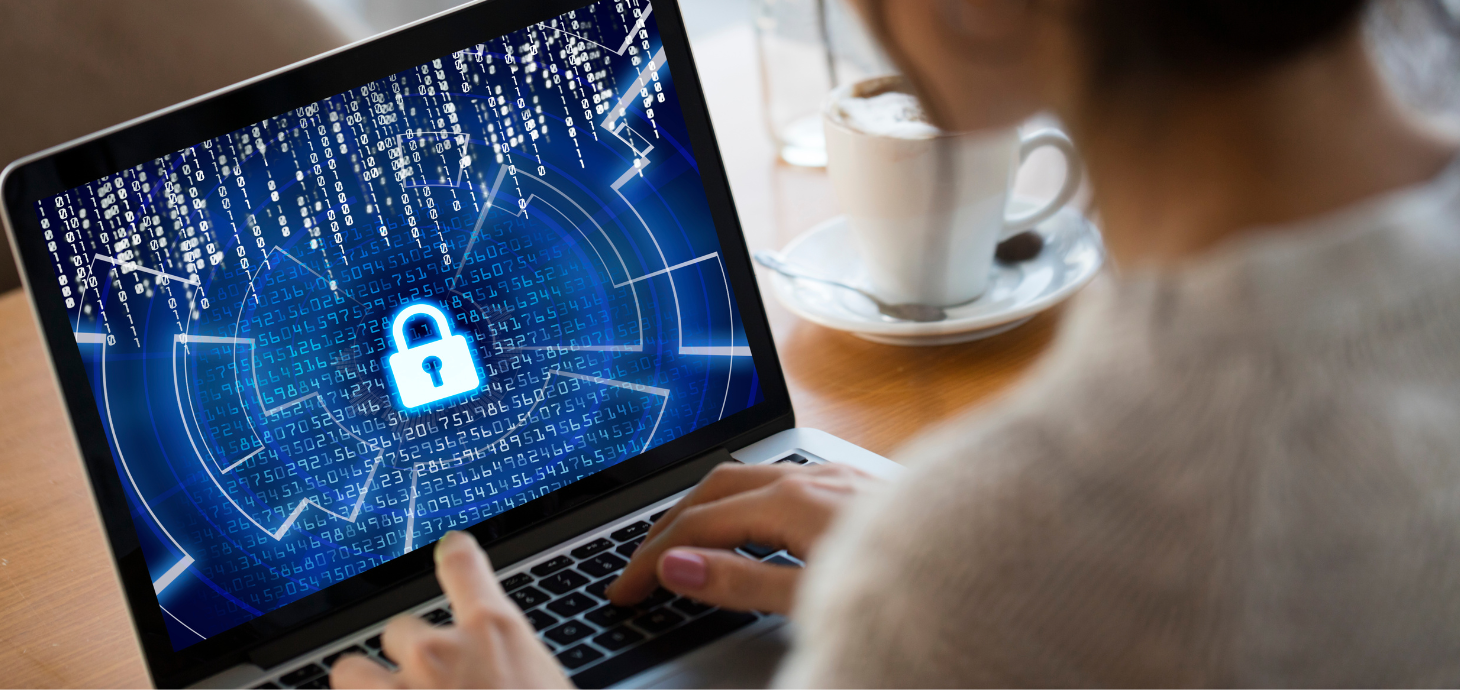Your Comprehensive Cybersecurity Checklist: 50 Strategies to Safeguard Your Information

We take your protection seriously and want to keep you informed on topics such as cybersecurity and fraud. Read on for proactive strategies and best practices to safeguard your information.
The Basics
Let’s start with a few general reminders for your day-to-day activities.
To stay safe, keep these tips in mind:
- Be skeptical when anyone new reaches out to you, especially if they are threatening in any way or using high-pressure tactics.
- Slow down. Taking the time to scrutinize requests and communications lowers your chance of accidentally falling victim to fraud.
- Never share your passwords or pin numbers.
- When opening emails, expand the information to see who they are really from. Beware of irregular sender addresses, misspelled domain names, and fragmented domains.
- Carefully review the content of emails and text messages for incorrect grammar, typos, and suspicious links and attachments.
- Don’t click on links or open attachments in unsolicited emails or text messages.
- Look for HTTPS at the beginning of website URLs when you’re logging into an account, ordering online, or entering any personal information into a website.
- Create and save bookmarks for important banking and financial websites you visit often to avoid inadvertently entering your credentials on a fraudulent site.
- Monitor your bank statements and credit reports for suspicious activity.
- If you have concerns, call the number on the back of your card, or call your bank or banker directly.
Passwords
Nearly every service and mobile app requires a username and password, so it comes as no surprise that according to research by NordPass, the average person has over 100 passwords! That’s a lot to keep up with, which means often our passwords aren’t very good.
For better password protection:
- Always change default passwords.
- Use complex passwords that are 16+ characters long and include uppercase and lowercase letters, numbers, and special characters.
- Try not to include information in your passwords that could easily be found online or on your social media accounts such as your birthday, anniversary, names of your kids or pets, etc
- Don’t use the same password for multiple accounts.
- Change your passwords at least once per year. For banking and financial accounts, quarterly is an even better goal to strive for.
- Use a password manager such as LastPass or 1Password. These services not only keep all your passwords in one place, but they also auto-fill them for you. They can create strong passwords for you to use, and some services even monitor if logins have been compromised.
- Turn on multi-factor authentication for all sites that offer it. This adds another level of protection, requiring two or more factors to gain access to a website or app. This ensures security even if one of the factors is compromised.
Devices
All of your data is housed on your devices. Your phone probably knows more about you than anyone considering it stores your contacts, location, message history, photos, and more. This is another important area to put precautions in place.
To secure your devices:
- Turn on automatic updates to ensure you have the latest and greatest security features built in.
- Keep your web browser and browser plugins updated as well.
- Use anti-virus protection software to fight attacks and block malware from your computer.
- Use a passcode of 6+ characters for your phone. Don’t use a repeating or simple incremental code.
- Do an audit of which apps have access to your contacts, location, camera, microphone, and other data, and remove unnecessary access.
- Delete applications you no longer use.
- Use automatic screen lock settings to ensure your devices aren’t left unattended and open.
- Check what is accessible on your phone’s lock screen (i.e., text messages and emails showing in notifications, Siri capabilities, etc.) and decide if you’re comfortable with it. If not, turn it off.
- Use secure Wi-Fi networks and avoid public Wi-Fi.
- Secure your home Wi-Fi network by changing the router’s default password. Create a separate Wi-Fi network for guests to use that is not connected to any of your devices.
- Do not use publicly available charging cables or USB ports to charge your devices.
- Only install apps from the Apple App Store or Google Play Store, never a third-party app store.
- Leverage Find My iPhone or the Android Device Manager to prevent loss or theft.
- Avoid using anyone else’s devices to login to your accounts. If you must do so, use an incognito or private browsing window.
Data Management
Thousands of emails and texts can give a hacker a lot of information about you. Beyond preventing someone from getting into your devices and accounts, another security strategy is to lessen the amount of data they could access if it happens.
To clean up your data:
- Back up important files regularly to a secure server, hard drive, or cloud storage.
- Set your phone to delete text messages after a period of time (i.e., after 30 days) instead of keeping them forever.
- Decide on a retention time for emails as well (i.e., a year) and save any older, important ones elsewhere (i.e., emails containing legal documents, contracts, etc.).
- Go through other services that store data for you like Google Drive, Dropbox, and OneDrive and delete unnecessary files.
- Clear your browser’s history regularly.
- Delete online accounts that you no longer use.
- When signing up for new online accounts, inquire about how your information will be stored and shared.
Social Media
Though it is a fun pastime and way to connect with others online, don’t discount the security and privacy risks from sharing information on social media about where you are and what you’re doing.
To manage your social media presence:
- Assume everything you post has the potential to become public. When in doubt, don’t share personal information online.
- Assume everything you post online is permanent. Once it’s online, you can’t take it back.
- Avoid sharing personally identifiable information online such as your email, address, phone number, date of birth, and social security number.
- Keep in mind how what you’re posting could come across to prospective employers or clients and if it could be taken out of context.
- Spend time auditing your settings on each network, especially privacy controls that determine who is eligible to see the content you post.
- Check your public profile and customize what people who are not connected to you can view.
- Review who is in your friends or connections list for fake accounts.
- Decide if you want others to be able to see who you are connected with.
- Search yourself both on social media and search engines like Google and Bing to see what comes up. Make sure there isn’t any information that is out of date or that you don’t want available, and if there is, attempt to remove it.
Helpful Apps & Services for Southern First Clients
As a Southern First client, you can rest assured that we take every measure to protect your identity.
Take advantage of these Southern First apps and services for additional alerts and safety measures:
- Southern First clients have access to Zelle® in the personal banking mobile app, a fast, easy, and secure way to send money to family and friends. Remember, only send money to people you know and trust. Southern First will never ask you to send money to yourself or unexpectedly call or text you about Zelle® or other payment apps.
- Set up real-time alerts. Southern First customers can sign into personal online banking to set up customized text and email notifications for transactions, deposits, transfers, and more.
- Control how your debit card is used with SecurLOCK Equip. Add your Southern First debit card to control when, where, and how it is used, set up instant alerts, turn your card on and off at the tap of a button, and more. Click here to download the app from the Apple App Store or click here to download it from the Google Play Store.
We hope this guide has been helpful in increasing your digital security. We recommend reviewing this information annually as a cybersecurity audit. Click here for a printable version you can complete.
Stay tuned here on our blog and on our social media accounts for more fraud prevention and cybersecurity tips. In October, we’ll be joining the American Bankers Association in the #BanksNeverAskThat campaign with more insight on how to thwart phishing attempts.
The content above contains links to third-party sites. Our privacy and security policies do not apply to sites not controlled by Southern First. Please refer to our External Link Policy for more information.



.png?sfvrsn=4583b53d_0)
